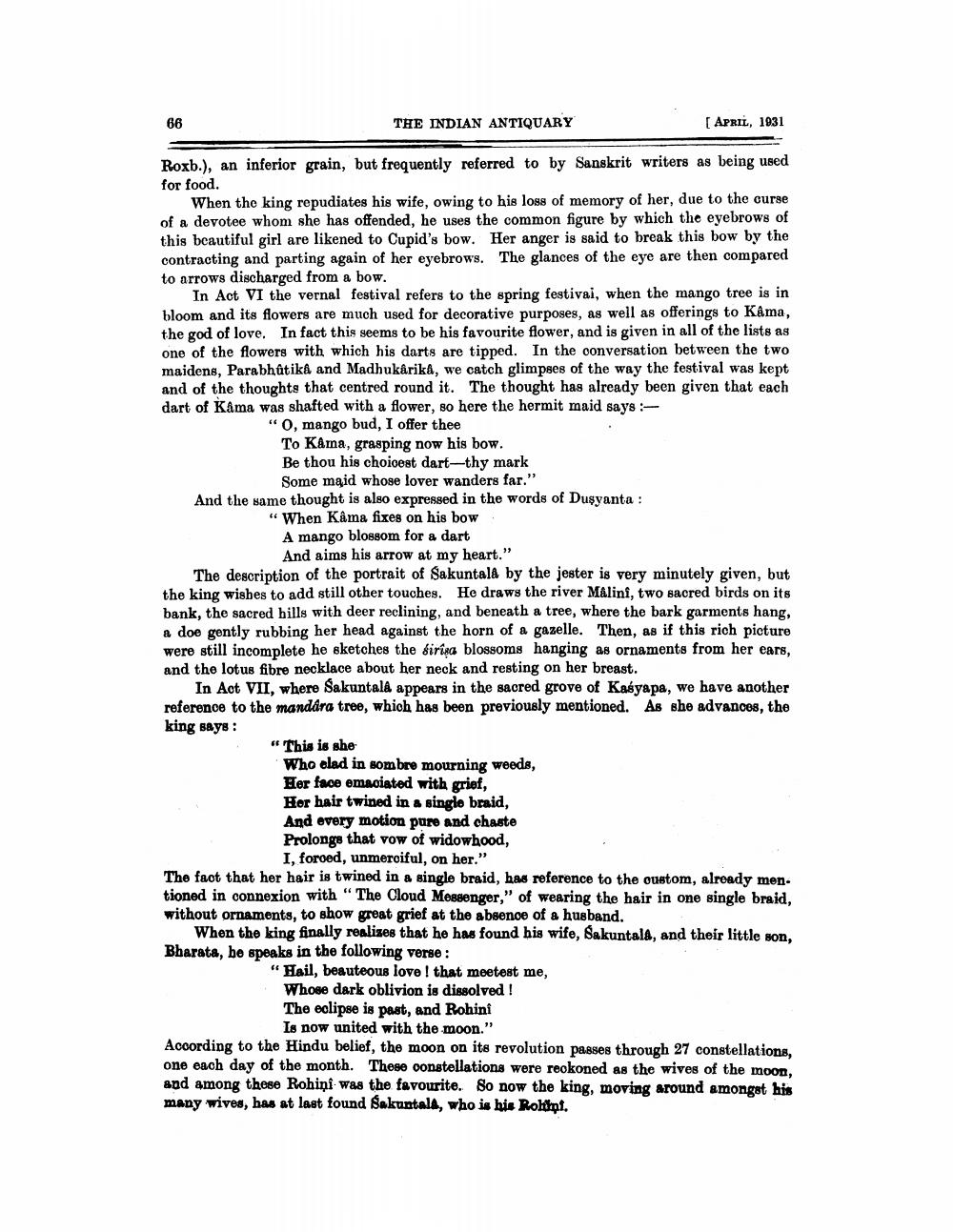________________
66
THE INDIAN ANTIQUARY
[APRIL, 1931
Roxb.), an inferior grain, but frequently referred to by Sanskrit writers as being used for food.
When the king repudiates his wife, owing to his loss of memory of her, due to the curse of a devotee whom she has offended, he uses the common figure by which the eyebrows of this beautiful girl are likened to Cupid's bow. Her anger is said to break this bow by the contracting and parting again of her eyebrows. The glances of the eye are then compared to arrows discharged from a bow.
In Act VI the vernal festival refers to the spring festivai, when the mango tree is in bloom and its flowers are much used for decorative purposes, as well as offerings to Kama, the god of love. In fact this seems to be his favourite flower, and is given in all of the lists as one of the flowers with which his darts are tipped. In the conversation between the two maidens, Parabhatika and Madhukarika, we catch glimpses of the way the festival was kept and of the thoughts that centred round it. The thought has already been given that each dart of Kama was shafted with a flower, so here the hermit maid says -
"O, mango bud, I offer thee
To Kama, grasping now his bow. Be thou his choicest dart-thy mark
Some maid whose lover wanders far." And the same thought is also expressed in the words of Dusyanta:
“When Kâma fixes on his bow
A mango blossom for a dart
And aims his arrow at my heart." The description of the portrait of Sakuntald by the jester is very minutely given, but the king wishes to add still other touches. He draws the river Malini, two sacred birds on its bank, the sacred bills with deer reclining, and beneath a tree, where the bark garments hang, a doe gently rubbing her head against the horn of a gazelle. Then, as if this rich picture were still incomplete he sketches the sirina blossoms hanging as ornaments from her ears, and the lotus fibre necklace about her neck and resting on her breast.
In Act VII, where Sakuntala appears in the sacred grove of Kasyapa, we have another reference to the mandára tree, which has been previously mentioned. As she advances, the king says:
"This is she Who clad in sombre mourning weeds, Her face emaciated with grief, Hor hair twined in a single braid, And every motion pure and chaste Prolongs that vow of widowhood,
I, foroed, unmerciful, on her." The fact that her hair is twined in a single braid, bas reference to the oustom, alroady men. tioned in connexion with "The Cloud Messenger," of wearing the hair in one single braid, without ornaments, to show great grief at the absence of a husband.
When the king finally realizes that he has found his wife, Sakuntala, and their little son, Bharata, he speaks in the following verse:
"Hail, beauteous love! that meetest me, Whose dark oblivion is dissolved ! The eclipse is past, and Rohini
Is now united with the moon." According to the Hindu belief, the moon on its revolution passes through 27 constellations, one each day of the month. These oonstellations were reokoned as the wives of the moon, and among these Rohiņi was the favourite. So now the king, moving around amongst his many wives, has at last found Sakuntala, who is his Roltini.




